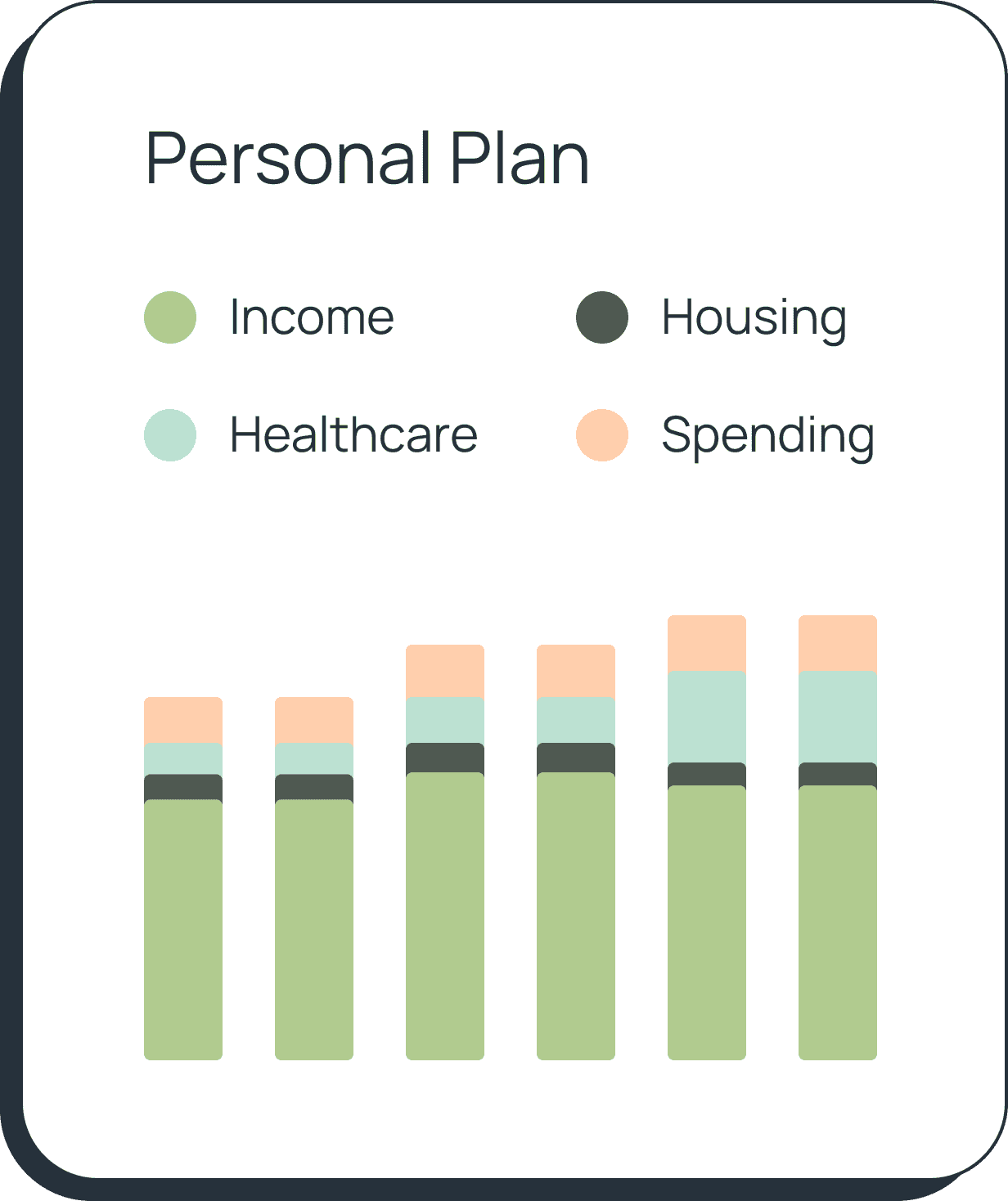Retirement Accounts
You can contribute up to a certain amount each year to retirement savings, but if you’re 50 or older, you may qualify for extra catch-up contributions.

R. Tyler End, CFP®
•
Published December 29th, 2023
•
Updated March 12th, 2025
Table of Contents
Key Takeaways
The IRS limits the amount you can contribute to retirement savings each year.
For 2024, you can contribute up to $23,000 to a 401(k), 403(b), SARSEP, or 457(b) plan.
For 2025, that limit increases to $23,500.
It’s never too late to start saving for retirement. If you’re age 50 or older, the IRS allows you to make catch-up contributions, giving you the opportunity to go beyond the standard annual contribution limits for certain retirement accounts.
For Employer-Sponsored Retirement Plans
In both 2024 and 2025, you can contribute an additional $7,500 to qualified retirement plans, including:
- 401(k) plans, other than SIMPLE 401(k) plans
- 403(b) plans
- SARSEP plans
- Governmental 457(b) plans
- The federal government's Thrift Savings Plan
This means your total employee contribution limit increases to:
- 2024: $23,000 + $7,500 = $30,500
- 2025: $23,500 + $7,500 = $31,000
Note: If you're age 60 to 63 in 2025 and your plan allows, you may be eligible for a special catch-up limit of $11,250, raising your total to $34,750.
For IRAs
For both 2024 and 2025, the standard IRA contribution limit is $7,000. If you’re age 50 or older, you can contribute an extra $1,000, bringing the total to:
- $8,000 for both Traditional and Roth IRAs
To qualify for catch-up contributions in any tax year, you must turn 50 by December 31 of that year.
Questions about your retirement accounts? We're here to help.
Schedule your FREE Retirable consultation today.Understanding catch-up contributions
Catch-up contributions allow older taxpayers to boost their retirement savings as they approach retirement age. While the IRS sets annual contribution limits for retirement accounts, individuals aged 50 or older can contribute more through catch-up contributions.
401(k), 403(b), SARSEP, and 457(b) plans
For those with employer-sponsored retirement plans, here’s how the contribution limits break down:
2024: Standard limit is $23,000
- Catch-up contribution of $7,500
= Total: $30,500 for individuals age 50+
- Catch-up contribution of $7,500
2025: Standard limit is $23,500
- Catch-up contribution of $7,500
= Total: $31,000 for individuals age 50+
- Catch-up contribution of $7,500
Why it matters
Maximizing these contributions is a smart financial move:
- If your employer offers matching contributions, you're earning free money on top of your savings.
- Even if there's no match, contributing pre-tax reduces your taxable income for the year, offering valuable tax savings.
- The additional time your money spends invested helps maximize compound growth.
If you're looking to aggressively save for retirement in your 50s, catch-up contributions are a crucial tool. Strategize and ensure you're saving the most you possibly can.
Roth vs. Traditional Retirement Plans
Consider your current and future tax situations when choosing between Roth and traditional retirement plans. Roth plans require you to pay taxes upfront, but withdrawals in retirement are tax-free. This can benefit you if you expect a higher tax bracket. Traditional plans offer tax-deferred growth, with taxes paid upon withdrawal, which might be advantageous if you anticipate being in a lower tax bracket after retiring.
If you already participate in a traditional TSP or another plan, you can direct future contributions to a Roth option, but you cannot convert existing contributions to Roth status. This strategic choice significantly affects your overall retirement planning, especially when considering tax diversification.
Contribution Limits for 2024 & 2025
Each year, the IRS sets contribution limits for retirement plans such as 401(k), 403(b), SARSEP, and governmental 457(b) plans. Here are the limits for 2024 and 2025:
2024 Contribution Limits
- Employee Contribution Limit: Up to $23,000
- Total Contribution Limit (employee + employer): Up to $69,000
- Catch-Up Contribution (age 50+): Additional $7,500
→ Total with catch-up: $30,500
2025 Contribution Limits
- Employee Contribution Limit: Up to $23,500
- Total Contribution Limit (employee + employer): Up to $70,000
- Catch-Up Contribution (age 50+): Additional $7,500
→ Total with catch-up: $31,000
These limits also apply to uniformed servicemembers. However, contributions from tax-free combat pay do not count toward these limits, allowing servicemembers in combat zones to maximize their retirement savings even further.
Phase-Out Ranges for 2024 & 2025
The IRS adjusts income thresholds each year to determine eligibility for deductible Traditional IRA contributions, Roth IRA contributions, and the Saver’s Credit. Here are the updated phase-out ranges for both 2024 and 2025:
Traditional IRA Deduction Phase-Out (for those covered by a workplace retirement plan)
| Filing Status | 2024 MAGI Range | 2025 MAGI Range |
|---|---|---|
| Single or Head of Household | $77,000 – $87,000 | $79,000 – $89,000 |
| Married Filing Jointly | $123,000 – $143,000 | $126,000 – $146,000 |
| Married Filing Jointly (contributor not covered, spouse is) | $230,000 – $240,000 | $236,000 – $246,000 |
| Married Filing Separately | $0 – $10,000 | $0 – $10,000 |
Roth IRA Contribution Phase-Out
| Filing Status | 2024 MAGI Range | 2025 MAGI Range |
|---|---|---|
| Single or Head of Household | $146,000 – $161,000 | $150,000 – $165,000 |
| Married Filing Jointly | $230,000 – $240,000 | $236,000 – $246,000 |
| Married Filing Separately | $0 – $10,000 | $0 – $10,000 |
These limits determine how much you can contribute — or whether you can contribute at all — based on your income and filing status.
Bottom line
Even if you can't max out your retirement contributions, aim to save as much as possible. If you're over 50, take advantage of catch-up contributions to boost your savings. Consult with a Certified Financial Planner® to optimize your retirement strategy and ensure you maximize your savings opportunities.
Share this advice

Tyler is a Certified Financial Planner® and CEO & Co-Founder at Retirable, the retirement peace of mind platform. Tyler has nearly 15 years of experience at leading companies in the wealth management and insurance industries. Before Retirable, Tyler worked as Head of Operations Expansion at PolicyGenius, expanding the company’s reach into new products — turning PolicyGenius into an industry-leading disability and P&C insurance distributor. Before working at PolicyGenius, Tyler worked as Wealth Management Advisor at prominent financial services organizations.
As an advisor, Tyler played an integral role in helping clients define goals, achieve financial independence and retire with peace of mind. Through this work, Tyler has helped hundreds of thousands of people get the financial planning and insurance advice they need to succeed. Since founding Retirable, Tyler’s innovative approach to retirement planning has been featured in publications such as Forbes, Fortune, U.S. News & World Report, and more.
Share this advice

Tyler is a Certified Financial Planner® and CEO & Co-Founder at Retirable, the retirement peace of mind platform. Tyler has nearly 15 years of experience at leading companies in the wealth management and insurance industries. Before Retirable, Tyler worked as Head of Operations Expansion at PolicyGenius, expanding the company’s reach into new products — turning PolicyGenius into an industry-leading disability and P&C insurance distributor. Before working at PolicyGenius, Tyler worked as Wealth Management Advisor at prominent financial services organizations.
As an advisor, Tyler played an integral role in helping clients define goals, achieve financial independence and retire with peace of mind. Through this work, Tyler has helped hundreds of thousands of people get the financial planning and insurance advice they need to succeed. Since founding Retirable, Tyler’s innovative approach to retirement planning has been featured in publications such as Forbes, Fortune, U.S. News & World Report, and more.



